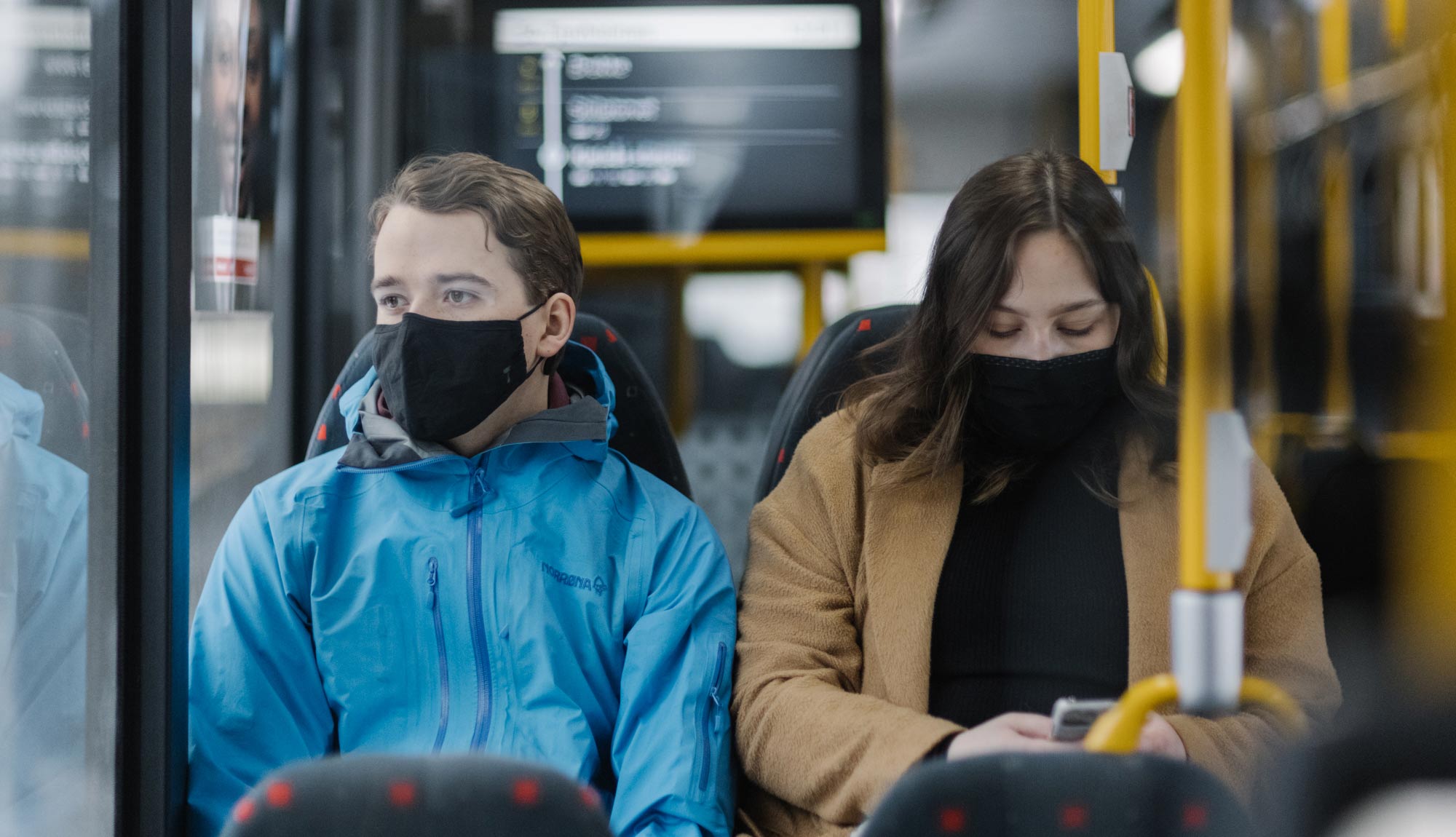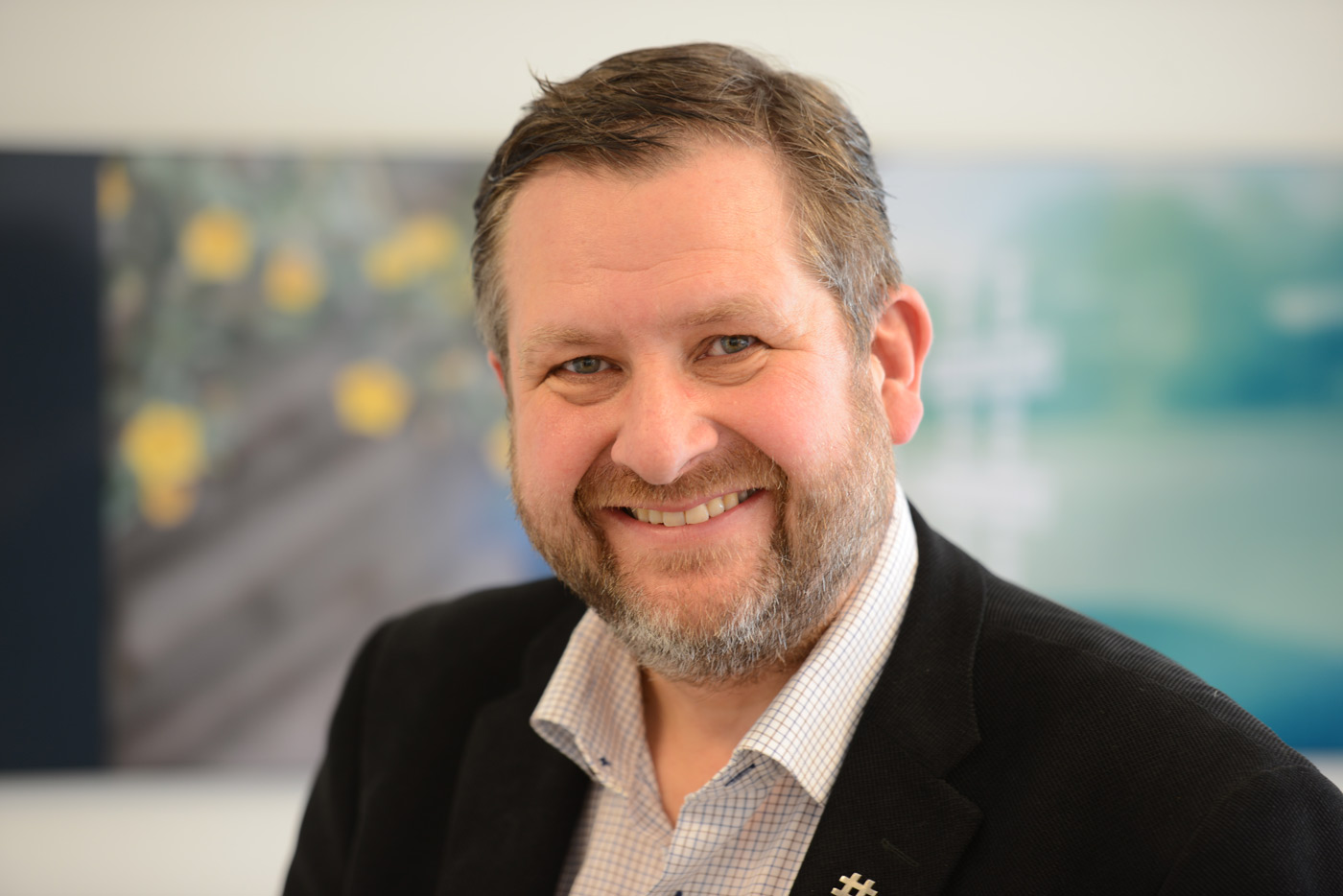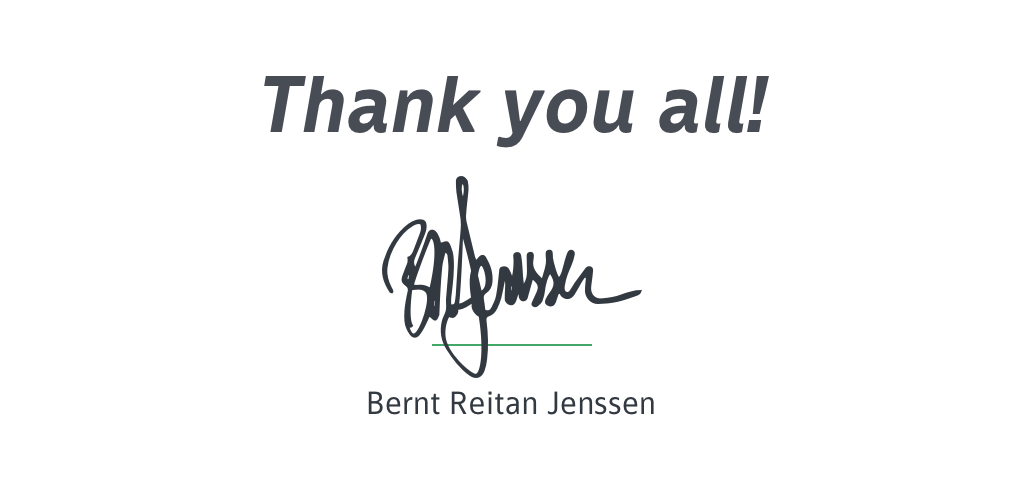
From the CEO
Despite good traffic growth in January and February, 2020 was not your ordinary year. Ruter acquired a new social mission during the pandemic to transport people in critical social functions safely so they can perform the tasks we all depend on. 2020 has shown how adaptable Norwegian society is, and we have seen that Ruter's Vision of Sustainable Mobility has not wavered. We now look forward to continuing working to build the transport system of the future for a new way of life.

Our new social mission
At the beginning of March 2020, all indications were that public transport was facing another year of strong growth. January and February delivered traffic growth in excess of what was planned.
We looked forward to building on the success of previous years through long-term work to create an attractive and accessible public transport system for all the residents of the Oslo region.
But on 12 March, Norwegian society shut down. Pupils and students were sent home to do schoolwork online, and employees were asked to work from home. Public transport was given a new social mission. During the pandemic, public transport became a means of transportation for people in critical social functions who had to travel to work. This applied to health personnel and fire department employees, but we also experienced that society was completely dependent on employees in grocery stores, in waste management, transport, logistics, cleaning, security and the employees of the public transport system, to name a few. We did not know how many people needed to travel by bus, metro or tram, we had to run at full capacity to maintain the best possible infection control. A half-full public vehicle became an important tool for keeping these people healthy, and keeping society going.
Travel only when absolutely necessary
In close collaboration with the other operators, we worked to ensure that those who were still needed us to get to work felt safe and knew that we were reliable. Everyone else was advised to choose alternative modes of transport. We also had to keep everyone who had critical jobs healthy while they travelled via public transport.
The operators of trams, buses, boats and railways have done their utmost to deliver safe and predictable transport through a demanding time. Those who still use public transport have shown great understanding for closed front doors on buses, drivers behind screens, seat marking and infection control posters. Customer surveys show that our customers have been responsive and made face masks a natural part of the journey.
Voluntary initiatives for public transport
I am glad that the population has largely complied with the local and national recommendations that arose throughout the year. 240 million public transport journeys is a reduction of almost 40% from 2019, and we see that the number of journeys for 2020 finally ended on a par with 2008, Ruter’s first year of operation.
We have seen traffic volumes varying throughout the year, between 30% and 75%, and that it has mainly followed the infection control advice set by the authorities at those times.
The minimum number of passengers has generally been around 30%, which means that many people depend on public transport to get to work.
Operating the public transport network in a continuous emergency is a demanding task, and we were uncertain at times whether we would be able to keep it running. The number of infected employees within the public transport sector was reported weekly, and we prepared plans B and C in case there should be a high number of infected drivers or other operationally critical employees. It is therefore gratifying to see that there have been low infection rates within public transport and that we are not a significant spreader of infection.
More people are walking or cycling in a year where fewer have travelled publicly
For many, the car seems attractive and infection-free, but I am glad that so many still chose to walk and cycle more in 2020. This is a trend I hope we will see more of in times ahead. And even though our customers have travelled in other ways than with us, almost 90% of them say they will return to public transport after the pandemic, while both population satisfaction and our reputation score have increased in the past year. I am deeply grateful that customers continue to show us trust, even when we encourage them not to use us.
When customers disappeared from public transport, a large proportion of ticket revenues naturally fell away. The government stepped in as a buyer of transport (together with the Municipality of Oslo and the County Municipality of Viken) to guarantee our operations through crisis packages and intermediate financing.
We have experienced a high level of trust and willingness to finance public transport so we can continue on our new social mission. This has been critical in maintaining sufficient traffic capacity.
Thank you so much for contributing
The inhabitants of the region have shown strong support for the public transport employees and made it possible for us to offer safe transport to those who need it in the past year. The flexibility and adaptability that society has shown shows some of the strength of Norwegian society and gives us hope that we will be able to cope with the adjustment and at the same time take advantage of the opportunities that come now that the pandemic enters a new phase.
For public transport professionals, 2020 has been a year of collective voluntary effort with an undefined end, and it is important for me to thank
… all our customers who avoided travelling by public transport unless it was absolutely necessary, by walking, cycling etc., keeping their distance and using a face mask. We look forward to welcoming you on board again when the time has come.
… our drivers and operators who have not given up in 2020. The pandemic has required a complete restructuring of public transport in a short time. This has not been possible without skilled and cooperative operators who have worked day, night and weekends to achieve full capacity in public transport and adapt to constantly changing rules for infection control.
… all empolyees at all the companies that make up the public transport network. There are many heroes here who have defied fear of infection and who have stood up for colleagues and for the community at all hours of the day.
… our owners and partners have worked tirelessly for public transport to contribute in its role as an important societal function during and after the corona pandemic.
The New Normal
Although this demanding situation challenges public transport as we know it today, it is important to look for opportunities that we might be able to implement after the pandemic has ended.
We have walked and cycled more than ever before in 2020, and we see that many people have started to travel outside rush hour now that home office has become a more normal part of everyday life. New ways of working have created and sometimes required more flexibility for both employers and employees. Rush hour costs society a lot because it requires greater capacity both on the road and in public transport. With lower rush hour peaks, we save both time and money, and thus lowering the burden on society as a whole. We can make better use of vehicles and infrastructure and thus also reduce emissions from the entire transport sector. Everyone will benefit from maintaining the good habits we learned during these hard times. This can also help us reach the national and international sustainability goals we have set for ourselves.
The pandemic could accelerate the transformation into a new and more customer-centric mobility system. We will therefore need to monitor many situations closely as we move out of the crisis.
We need to monitory our customers, learn from experience, understand the new travel patterns that are arising and make quick adjustments when needed. Ruter’s vision, which was launched in the autumn of 2020, is a good and important ‘guiding star’ for us to follow in this work.
We are ready to offer Sustainable mobility
The corona pandemic hit Norway in the final phase of this work. Our Vision describes the most important developmental trends that affect our society and their possible implications for the transport sector. Data and the new insight these can provide, have become important tools for deciding what and how we offer new and better services. More than half of the bus fleet is now equipped with many onboard sensors that stream data in real time about driving conditions, weather, delays and how many people get on and off. We have also used machine learning and Artificial Intelligence to make it easier for our customers to contact us. The goal is to provide faster and more relevant information when customers need it.
Better equipped for the future
The pandemic has shown us how fast the world can change. Public transport has shown the ability to adapt and delivered on the new social mission. Knowledge has been developed and new opportunities will come. 2020 was a long uphill climb, but we hope to reach the peak soon. We will reach the summit in good shape and descend into the New Normal at a good pace, so we can continue our contribution to the Green Shift and create a more sustainable world together.
Thank you so much for the trust you have shown and continue to show us. I look forward to seeing you again on board soon!
